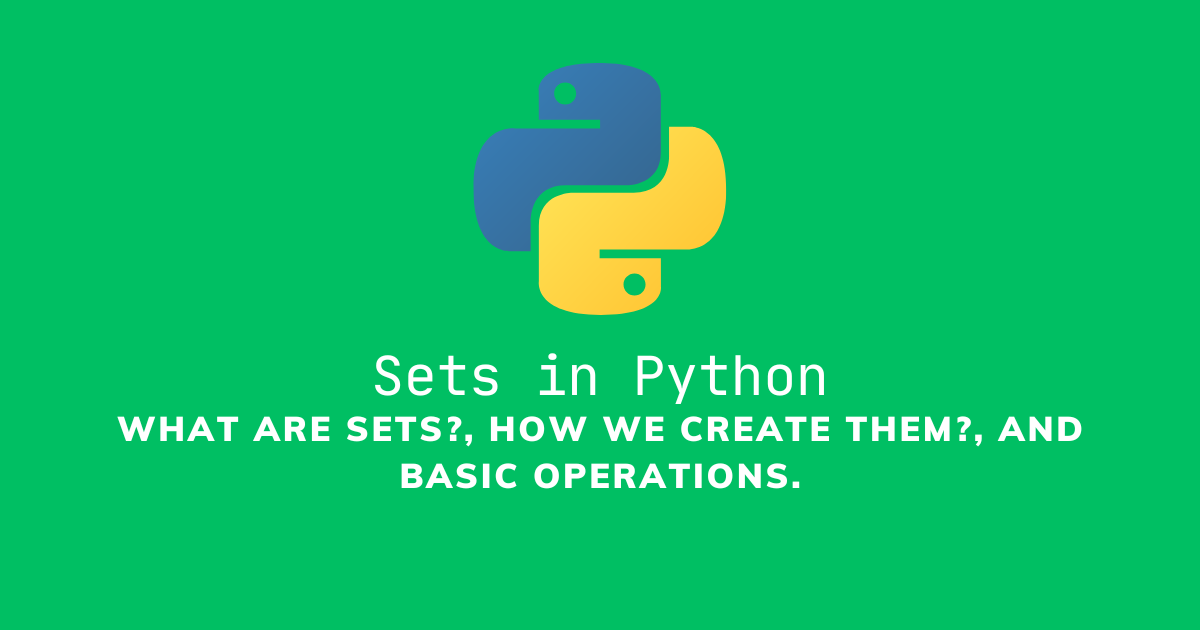Sets in Python part 1
 Ulises Alexander Arguelles Monjaraz
Ulises Alexander Arguelles Monjaraz
What are sets?
Sets are one of Python's 4 built-in data types used to store data collections.
Sets in python are similar to sets in mathematics, so they share characteristics. For example, both stores unordered, and unindexed data. Sets can't store multiple instances of the same data.
The python representation of sets also doesn't allow changing the value of the items, but we can remove and add items. Set items can be of any data type, and different data types can be contained in a set.
How do we create a set?
Similarly to how we create dictionaries in Python, we use curly brackets to create sets.
To create an empty set, we use the set() function. We can also use the set(<iter>) function to create sets, passing an iterable as an argument.
Set operations
Checking length
We use the len(<set>) function to the length, the number of elements, of the set.
Checking membership
To test if an item forms part of the set, we use the in, and not in operators.
Adding
To add items to a set, we can use the add(<elem>) method, which only accepts one item at a time and can accept tuples as an item.
We can also use the update(<elem>) method, which can take lists, strings, tuples, and other sets as its arguments.
Removing
We have 4 ways to remove elements from a set.
The remove(<elem>) method removes <elem> from the set but raises a KeyError exception if <elem> doesn't exist in the set.
The discard(<elem>) method does the same as remove(<elem>), but instead of raising an exception does nothing if <elem> doesn't exist in the set.
The pop() method removes an arbitrary element from the set. If the set is empty raises a KeyError exception.
At last, the clear() method is used to remove all the elements from the set.
Further reading
Python - Set Methods - W3Schools
Mathematics | Set Operations (Set theory) - GeeksforGeeks
Format
With this blog post, I'm experimenting with the format for the code block. Instead of using code block with Markdown, I use Replit embeds so that you can see and execute the code.
What will you prefer in the future Markdown, GH Gists, or Replits?
Subscribe to my newsletter
Read articles from Ulises Alexander Arguelles Monjaraz directly inside your inbox. Subscribe to the newsletter, and don't miss out.
Written by

Ulises Alexander Arguelles Monjaraz
Ulises Alexander Arguelles Monjaraz
I'm a software engineer from Mexico, I've been coding in Python for around 3 years, mostly in personal and college projects. Currently, I'm focusing more in learn and develop in Haskell, one of my current projects is the design and coding of a library to help in the development of book related software. My hobbies are: listening to music, watching anime and series; reading manga, webtoons, webcomics, and books; programming, traveling when possible, going to the movies, going out for a walk.